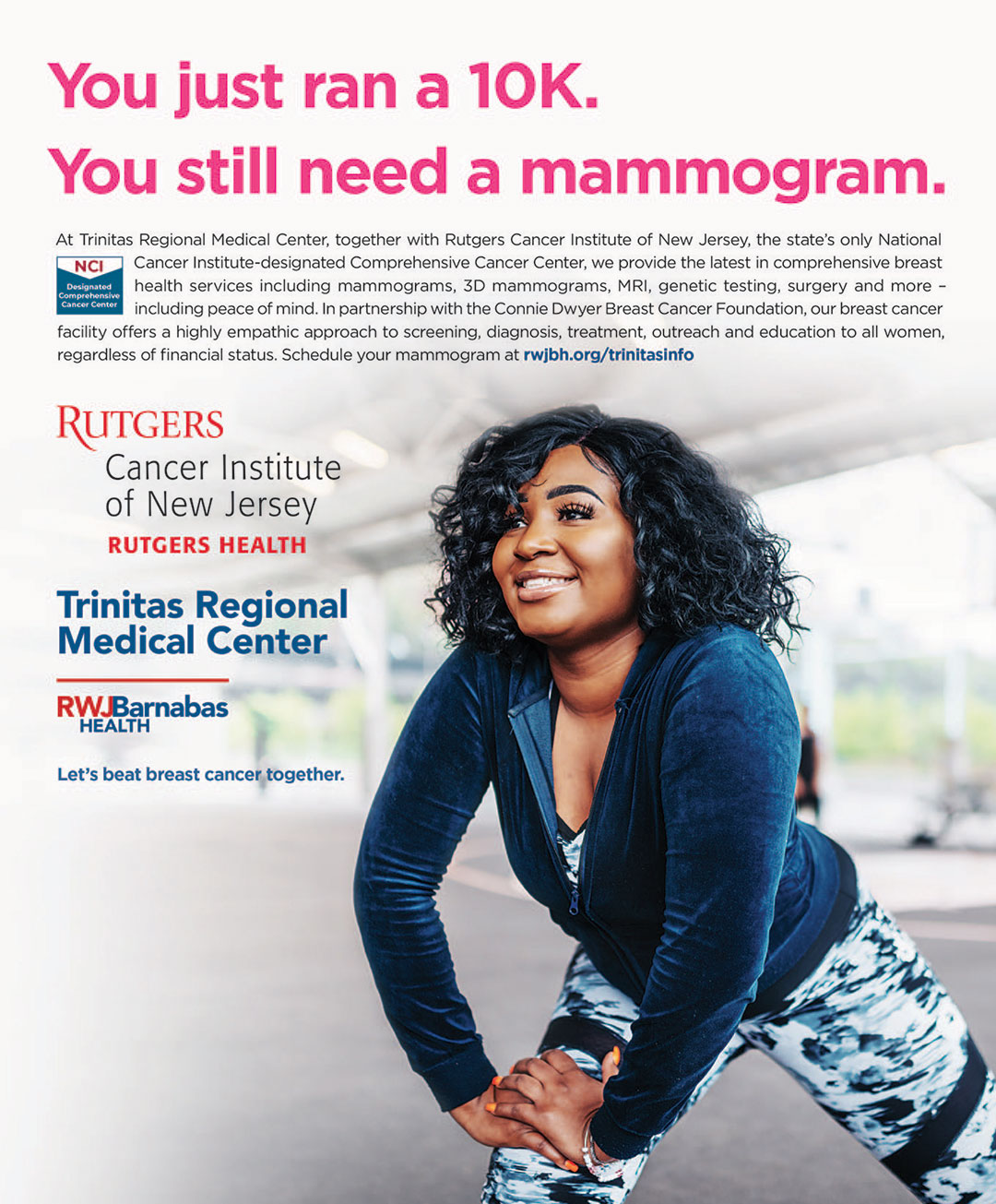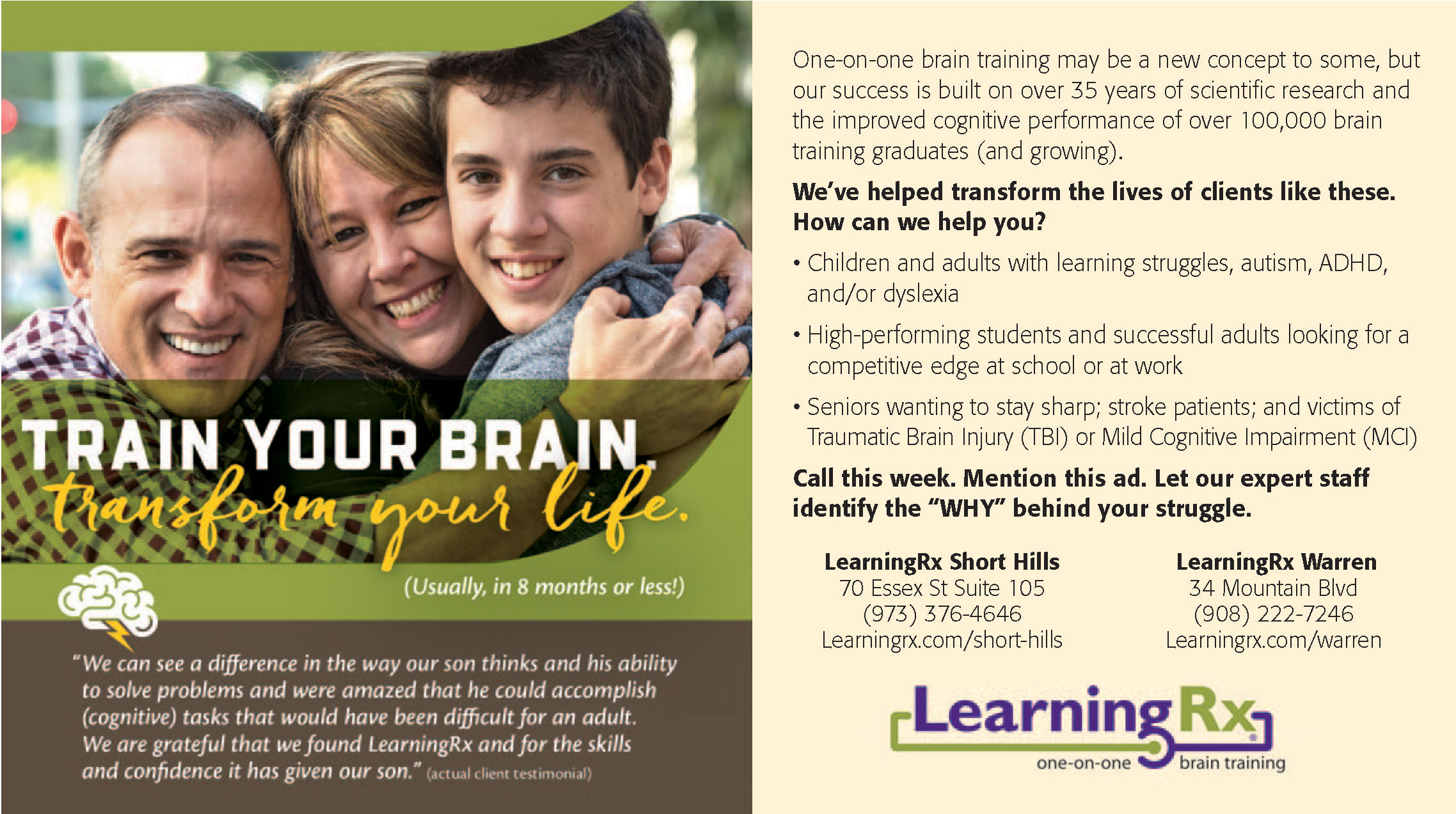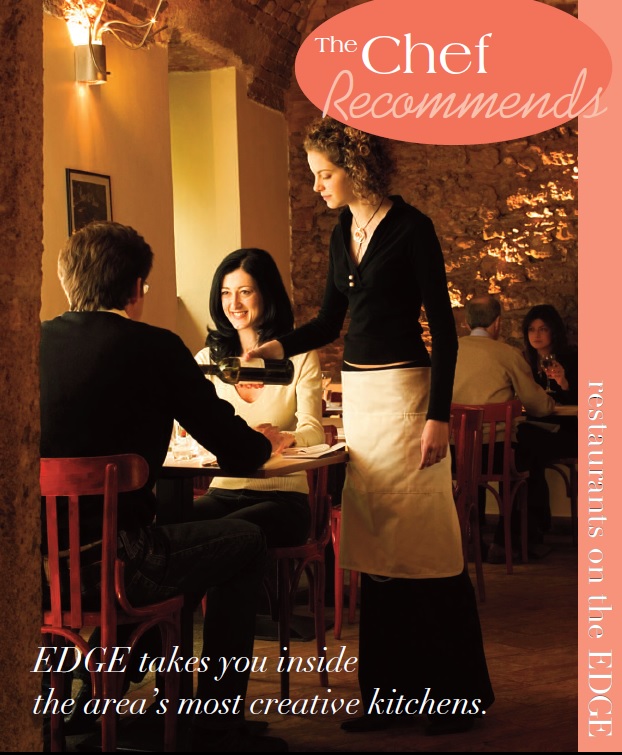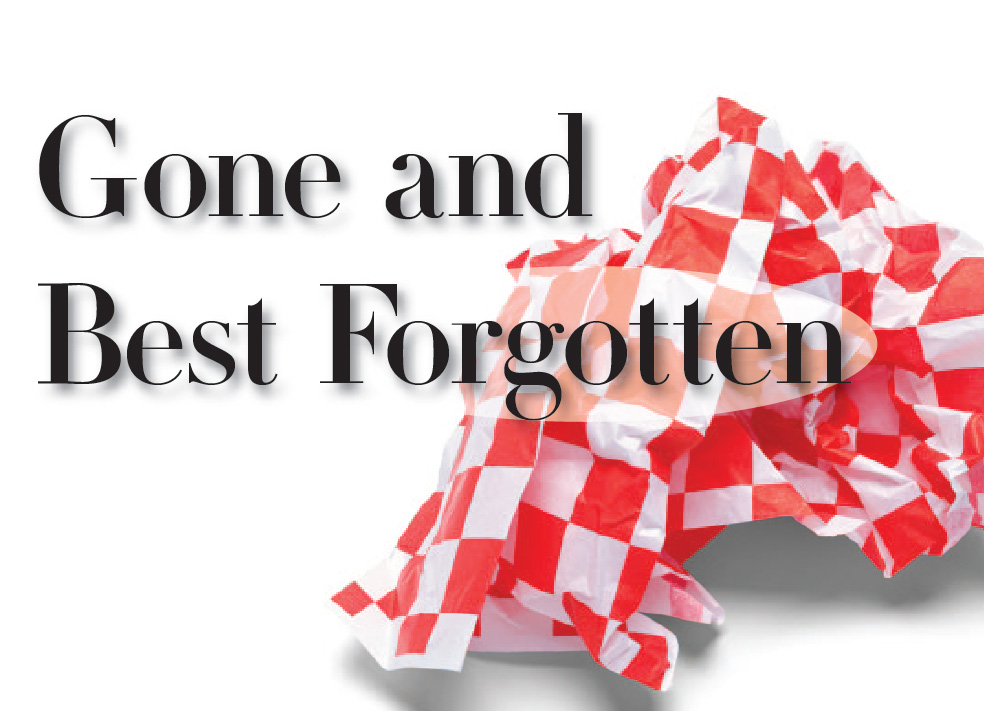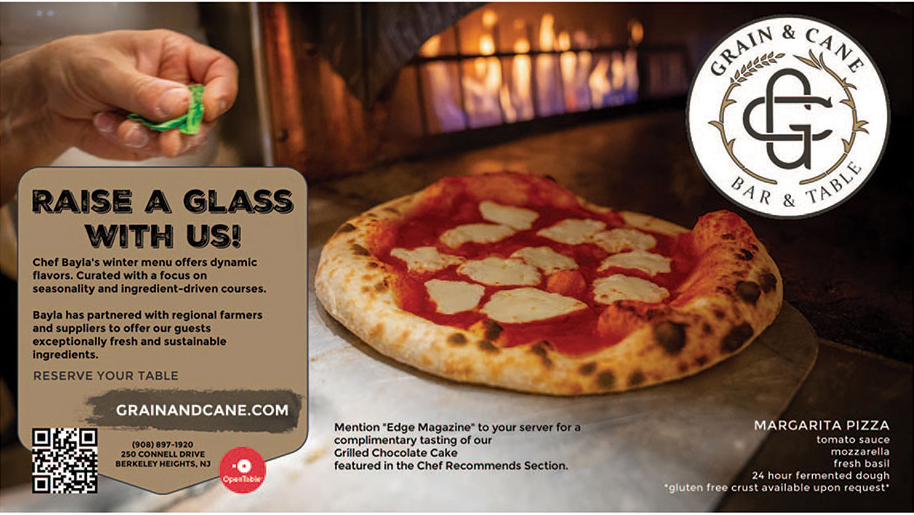A sustainable solution to heating and cooling is right under our feet. But will it pay to ‘Go Geo’ in 2022?
A generation ago, green was a crayon color and sustainable was rarely heard outside a CPA’s office. Nowadays, these words are used to sell products, mobilize activism and promote environmental stewardship. They are flexible, sexy adjectives that pair nicely with more familiar words to create catchy phrases like “going green” and “sustainable energy.” For most homeowners, turning those ideas into meaningful action steps involves junking an ancient HVAC array in favor of a more efficient one. For a forward-thinking few, however, harnessing the constant temperature of the earth to power a geothermal heating and cooling system is the cleaner, greener and more cost-efficient long-term investment.
Traditional HVAC systems (also called air-source heat pumps) pull in the outside air as the exchange medium to regulate indoor temperatures. As we all know, the weather in New Jersey fluctuates throughout the year, so at the extremes of heat and cold, your air-source heat pump has to work harder to keep you comfortable—and puts a bigger dent in your bank account. On the other hand, geothermal heat pumps (GHPs)—alternately referred to as geoexchange, ground-source, earth-coupled or water-source heat pumps—channel the underground temperature into the heating and cooling systems of a home.

Below the frost line in New Jersey, about 4 to 10 feet under the surface, the earth maintains a subterranean temperature of approximately 54° Fahrenheit. With this persistent heat source, geothermal heat pumps can warm your house in the winter, cool your house in the summer, and, if equipped with a desuperheater accessory, even provide hot water to a home—all while using less energy than your standard air-source HVAC.
Geothermal stems from the Greek words “geo” (earth) and “therme” (heat)—heat from the earth. If you’re forming a mental picture of hot springs, deep caves, oceanic vents and molten rock, you’re correct. But, when it comes to a geothermal heat pump in your home, the “geo” in question is, well, dirt.
Modern geothermal technology dates back to the late 19th century, when the world’s first district heating system was implemented in Boise, Idaho. In 1892, Boiseans directed water from the nearby hot springs to provide heat to local establishments. In 1908, homes in Iceland began to use geothermal steam as a heating source; today, 90% of Icelanders use geothermal heat.
During the 20th century, geothermal technology gradually progressed, with innovators constructing geothermal power plants at hot springs and steam fields. In the 1940s, Ohio State University professor Carl Nielsen developed the first residential geothermal heat pump.
From there, however, the technology has done a mostly slow roll. During the energy crisis of the early 1970s, there was a brief spike in interest, but the technology was still wonky and geothermal heat pumps didn’t become popular until a decade or so ago. Now there are roughly 50,000 GHPs installed every year in the US alone.
Can You Dig It?

The first step in installing a geothermal heat pump is to dig a shallow trench and bury a loop of pipes, called a heat exchanger, underground. Once the heat exchanger is in place and connected to the heat pump inside your house, the loop is filled with a fluid, typically a combination of water and antifreeze. During New Jersey winters, the constant underground temperature of 54° is typically warmer than the air aboveground, which averages around 34°. The antifreeze solution in the heat exchanger circulates underground, where it absorbs the earth’s natural heat. The heated solution is then redirected back to the heat pump apparatus in your home, which warms it up another 20° or so and then sends warm air through the ventilation ducts in your house.
During the summer, when New Jersey temps average in the 80s, the same solution in the exchange loop absorbs the heat inside your house, sends the heated solution to lose heat underground and then returns the now-chilled solution to the heat pump to save you from the summer swelter. In this case, heat pump is a bit of a misnomer; the unit is more of an air circulator at this temperature.
When considering a geothermal heat pump, it is helpful to understand your options—for instance, what type of heat exchange loop you want (or need) to install. There are four types of ground-source loops to consider, with three closed-loop options and one open-loop option. Closed-loop systems operate in the same way as I previously described and are the most common type of residential heat exchangers. The three types of closed-loop systems are horizontal loops, vertical loops, and pond/lake loops.
Horizontal loops are typically more cost-effective than other GHP options, because you are digging out into your yard instead of straight down. However, horizontal loops require a decent amount of property to dig the trenches needed for the exchange loop. Once the trenches have been excavated, two pipes are connected and buried—either staggered at 4 and 6 feet deep, or side-by-side at 5 feet deep. Horizontal loops can more easily accommodate difficult geology, like bedrock, since they don’t require deep excavation. Vertical loops are better suited for commercial properties, properties that have limited space or homeowners who wish to minimize soil disturbance. In order to install a vertical loop, holes are drilled two feet apart and down to a depth of 100 feet or more, depending on the residence. Vertical loop installation is the priciest of the GHP options, but it may be necessary for certain properties.
Pond/lake loops make up the last of the popular closed-loop options, and they are a wonderful and relatively inexpensive choice for those with access to a nearby body of water. Pond/lake exchange loops are coiled under at least eight feet of water in order to prevent freezing. This type of system is cost-efficient and effective, however it must meet potentially restrictive criteria regarding the depth, volume, and quality of the water.
The last option is the aforementioned open-loop system. Unlike a closed-loop system, open-loop systems use clean water instead of an antifreeze solution as the heat exchange fluid. This requires a well or an adequate source of clean surface water in order to function properly. As with pond/lake systems, there may be local codes and regulations (for instance, on groundwater discharge) that could inhibit the use of this type of GHP.
Buried Treasure?

There are plenty of reasons to invest in a geothermal heat pump for your home. One of the principal arguments in favor of geothermal heat pumps centers on efficiency. Geoexchange is a remarkably green technology. When it comes to HVAC systems, geothermal heat pumps are the most efficient and the most sustainable. By harnessing the constant underground temperature as a source of heat energy, GHPs are particularly steady and sustainable systems in regards to energy consumption. According to the EPA, geothermal heat pumps use 25 to 50% less energy than standard air-source units and can effectively reduce overall energy usage up to 44%—and up to 72% when compared with standard electrical air-conditioning systems. They can also excel in particularly humid areas by enhancing indoor humidity control. Geothermal heat pumps are also quieter, saving you from the gnawing buzz of traditional systems. GHPs typically run at 40-48 decibels, while standard air-source systems can reach over 70 decibels when they kick on.
Geothermal heat pumps also have a longer lifespan than their traditional counterparts and require less maintenance. While a standard HVAC system has an average lifespan of about 15 years, the geothermal ground loop can last up to 60 years; the average lifespan of the indoor component is almost 25. You can also get a 25-year-or-more warranty for your geothermal heat pump, depending on the installer.
So what’s not to like? Well, installing a ground-source loop on your property requires intense digging and/or drilling, depending on the type of loop you plan to install. Not only can installation of an underground loop temporarily tear up your property, but the actual process can take quite a while. Retrofitting a GHP into your residence can take 6 to 8 weeks to fully complete. New installations in ongoing construction can take even longer, considering all the necessary coordination and scheduling with the other contractors. By comparison, an air-source heat pump typically takes less than a week to install. You also need to be aware of the type of soil your house is sitting on. Dense clay soils are the best option for geothermal heating and cooling systems, followed closely by wet, sandy soils. Dry, sandy soils are the worst option due to poor heat transference, so if this is the soil that you have on your property, your GHP may not function as efficiently.
If you live in heavily forested or (like my family) in earthquake-prone areas, you may want to reconsider buying a geothermal heat pump. Dense forestry means that there are lots of roots that could damage the underground exchange loop. Earthquakes can also be a major threat to your heat exchanger. Not only are repair costs expensive, but the hazards of soil contamination with runaway antifreeze solution can create a small environmental catastrophe.
The Long Game
Purchasing and installing a geothermal system will cost you several times more than a traditional air-source unit. The earth-friendly aspect of GHP ownership may be worth a premium to you, as well it should, but even the most ardent fan of green sustainability may choke a little on the price. So the big question is usually When does it pay for itself?
Let’s start with what we know. If you own a 3,000 square-foot house in New Jersey, purchasing and installing a traditional five-ton HVAC system will cost you around $8,000. Unless you love sauna-like heat in the winter and meat-locker AC in summer, your average annual operating expense for an air-source unit will be around $2,000 give or take. By comparison, a GHP unit serving the same home has an average annual operating cost of just over $800, due to minimal energy consumption.
The return on investment (ROI) in energy savings for a geothermal system typically pays back the upfront cost in 5 to 10 years, depending on a number of variables, but mostly on the initial installation expense—which is where the real damage to your wallet is done.
In 2019, horizontal loop installation fees ranged from $12,000 to $25,000 dollars, while vertical loop installation ran anywhere between $16,000 to $30,000. The total cost of a high-quality GHP in a large home could touch $50,000 in a structure where new ductwork and carpentry was necessary. Still, the ROI seemed reasonable for all the good you might do the planet.
Unfortunately, 2019 was a lifetime ago. The cost of everything—labor, materials, electronics, etc.—shot up during the pandemic. Many homeowners had to put their geothermal dreams on hold when they received the bad news that an additional $10,000 or $15,000 would have to be added to the original estimate. Most folks in the industry believe that this is not the new normal; geothermal project costs should come back into line at some point, hopefully sooner rather than later.
Perhaps infrastructure legislation will help homeowners with the costs. Congress already extended a 26% federal tax credit for geothermal home energy efficiency upgrades until the end of 2022 (it will be reduced to 22% in 2023). Certain municipalities offer an “energy-efficient mortgage,” so you should consult your local banks and mortgage companies for information about that. And geothermal installers usually offer low- or no-interest short-term financing.
To be sure, the financial burden of “Going Geo” is not for everyone. Even in the best of times, with the best of terms, embracing geothermal is a long game. Ten years (or more) is a long time to wait to be made whole. However, if you are deeply concerned about climate change and, especially, if you’re the kind of person who wakes up in a cold sweat wondering how in the world you’ll pay your energy bills in 2030 or 2040, why not let the earth help you out a little?
And do the planet a solid in return. EDGE
Editor’s Note: Caleb Szarabajka is a freelance writer with a degree from Berkeley and a keen interest in earth-friendly tech innovations. For more information on geothermal heating and cooling, visit the Geothermal Exchange Organization web site at geoexchange.org.
“Popular” may be one of the iconic songs that Kristin Chenoweth has made her own during a hit-filled stage and screen career, yet it falls far short of describing her standing among musical comedy connoisseurs. It is no exaggeration to say that Chenoweth is one of the most beloved performers in Broadway history. From her Tony-winning performance as Sally in You’re a Good Man, Charlie Brown to her memorable turn as the good witch Glinda in Wicked—to her portrayal of Mildred, the cranky preacher’s wife in this summer’s joyfully insane Apple TV series Schmigadoon—she has specialized in imbuing her characters with irresistible charm and explosive energy. Can you imagine Kristin Chenoweth sitting quietly on the sidelines during the COVID-19 pandemic? No…and neither could EDGE editor Mark Stewart. Fortunately, he was able to slow Kristin down long enough to chat about her busy 2021 and the just-released holiday album, Happiness Is…Christmas!
EDGE: Can you recall the moment when you were on a stage before an audience and thought, This is for me?
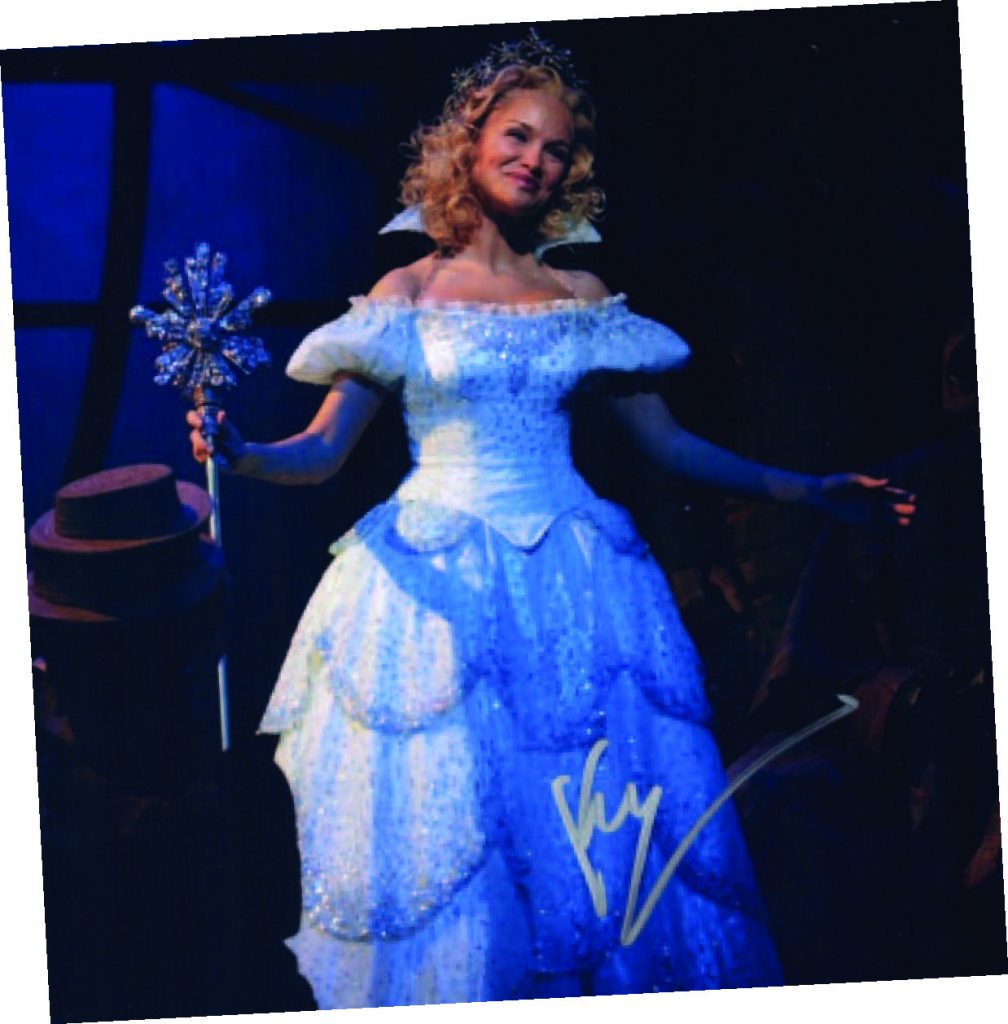
KC: Of course. I was about eight years old and wanted to be a ballerina. I was in a version of The Nutcracker in the Tulsa Ballet and wanted to play one of the mice, but I was too small to fit in any of the costumes. The director said he wanted me to “create” the role of the rabbit. I thought that seemed kind of sketchy. The rabbit just sat there next Clara for all of Act II. It was the second weekend, a Saturday matinee. My family was there. One of the props the sugarplum fairies dance with, a large vine, fell center-stage. It was a pretty big prop. That’s very dangerous for theater and especially for ballerinas. I thought, What would a bunny do? How would it act? So I hopped out, put it in my mouth and hopped back. The audience went crazy. I thought, Hey…I like this feeling! That’s when the bug bit me.
EDGE: Did your parents indulge this desire?
KC: You know, they did. We lived in Broken Arrow, Oklahoma and the nearest town that had anything was Tulsa. My parents were very gracious. They allowed me to take piano lessons at Tulsa University and I studied ballet in Tulsa, as well, where I became a member of the Tulsa Ballet junior dance company. And I sang in church. The first time I sang in church I was little, too, and thought Hey, I like this singing stuff, too. It kind of all happened at once.
EDGE: Florence Birdwell passed away earlier this year. She is someone you’ve mentioned as having played a key role early in your career.
KC: Thanks for asking about her. We had her memorial this October. The only way I know how to describe her is that she was a force—in terms of emotion and technique and knowing how to handle each student in a different way. I was really hard on myself, so I didn’t need somebody else being hard on me. She knew when to be hard on her students and when not to be. Yes, she taught me vocally and technically, but she’s really the one that ingrained in my mind the idea of If you don’t mean what you’re singing, don’t sing it. I still hear her in my head today. And now that’s what I tell my students, at Broadway Boot Camp and other places: “If you don’t mean it, don’t sing it.”
EDGE: I’m thinking of the bunny story in Tulsa and about the idea of creating a role. In the 1999 Broadway revival of You’re A Good Man, Charlie Brown, you played Sally. I saw the original and she wasn’t in it. It must have been an interesting opportunity to create a role that didn’t previously exist. Who in the world knew that Charlie Brown’s little sister would be a show-stopper?
KC: Certainly not me! I remember Michael Mayer saying, “I have a surprise for you but I can’t tell you yet.” I had another offer at the time in Annie Get Your Gun with Bernadette Peters. He said, “Trust me, you’re gonna want to do this.”
EDGE: Why couldn’t he tell you?
KC: Because Charles Schulz was still thinking about whether he wanted to give his permission to [add the Sally character]. Somehow, I knew in my heart I wanted to be in Charlie Brown, I just didn’t know why. I followed my gut and took the job. The first day of rehearsal, we were all asked to sit in chairs, in front of the costumes of the characters we would play. When I got to my chair I saw it was all Sally stuff. I thought, Oh my gosh! I get to create this part! It’s rare that a director trusts someone to do that. And obviously, it was the right decision for me and one of the most fun times in my life.

EDGE: Thinking about Wicked (left) and some of the wonderful roles that followed, do you look back at that decision as a game-changing moment for you?
KC: I look back and think of Michael Mayer’s genius of having the idea and how lucky it was that Charles Schulz said yes to Sally. And what a good idea it was to let us play with all of the different sketches when we were out of town to see which ones really worked, and which didn’t, in front of an audience. And finally, the genius of Andrew Lipa to come to me with a song, “My New Philosophy,” which was so character-driven. It was a great experience, but also one I can never repeat because my life changed overnight. I was lucky to be with my Charlie Brown family, and they with me—there were only six of us—because we were together.
EDGE: Do you still have to audition for roles?
KC: Sometimes I have to audition. Mostly for Broadway I don’t. To be honest, we look for jobs that are “me” or they come to me and say this is a “Kristin part.”
EDGE: How do you know you’re good to go with a role?
KC: If I don’t want to see anyone else playing it, then I know that’s my part. I’ve got to have fun and love the person—even if she’s a nightmare, I’ve got to figure out ways to love her. Sometimes I like to turn a part on its ear and not do what people expect. I think I’ve been successful in that respect; I’ve found my niche.
EDGE: Which, I guess, is how you make it look easy.
KC: That’s a very big compliment and I appreciate it.
EDGE: What’s the most difficult thing you’ve had to do professionally?
KC: Schmigadoon was pretty hard because we had to do an 18-page song in one take, with no cuts. In other words, no mistakes. That was a little scary.
EDGE: Do you have a favorite song, one you never tire of singing?
KC: There’s a song, “Til There Was You,” that Meredith Wilson wrote in the movie of The Music Man, which I did years ago with Matthew Broderick. I never get tired of singing that song. I just think it’s one of the most perfect songs.

EDGE: You’ve played opposite some very impressive men and women on Broadway, people like Andy Karl and Peter Gallagher, whom most people know. What I’m wondering is have you ever worked with someone you knew little or nothing about, and they just blew you away in that first rehearsal?
KC: Everybody blows me away [laughs]. I think about the Andy Karls and the Peter Gallaghers and, goodness, going back in time to Brian D’Arcy James…I’ve just been so lucky. With my leading women. With my leading men. I’m grateful because they have all been very giving. In Promises, Promises I was in a role that no one wanted to see me play because it was more on the dramatic side. Sean Hayes, who is one of my closest friends, held my hand and was like I got you. He’ll always have a special place there for me.
EDGE: Tell me about your upcoming Christmas album. I’ve always wondered, how does an artist pick the songs that “make the cut” and belong together? Are they personal favorites? Are they ones that you feel suit your style? To me it seems like a real hand-wringing decision.
KC: Well said. It can be a hand-wringing experience. I really wanted this album to have a particular feel, like it’s in my DNA, which is why I recorded it in Nashville—not Country, but something with intimacy. I chose each song very carefully. We do a version of “Happiness” from You’re a Good Man, Charlie Brown where we were given permission to rewrite the words about Christmas. That was a big one because of the history for me. I love Kaye Starr so “Man with a Bag” had to be on there. I love Karen Carpenter, so “Merry Christmas, Darling” had to be on there, too. There’s a song that Barbra Streisand sang a long time ago called “Christmas Lullaby” written by Ann Hanson Callaway that had a huge orchestration to it, but I wanted it to be smaller in nature. A wonderful guitarist out of Nashville named Brian Sutton played it so beautifully. There’s a song that Stephen Schwartz wrote called “We Are Light” and as I thought about the feel and the tone of the record, the idea of “light”—of light at the end of the tunnel, of we’re getting there—kept coming up. It’s a Chanukkah song, but it’s so hopeful that I really wanted to have that on there, too, because a lot of people don’t feel that now. The way we end the record is with Peggy Lee’s “My Dear Acquaintance.” With all we’ve been forced to deal with the past couple of years with the pandemic, that song to me is a real standout because it’s like, “here’s to life” in a way. There’s a lot of happiness on this album.
EDGE: You mentioned Karen Carpenter. To my mind, no one made a happy song sound sadder than Karen Carpenter. How do you make her song your own?
KC: First of all, you quit listening to her [laughs] because I will imitate her. But you can’t help take some of the things she did so beautifully and pay homage to her. Karen had a deep voice, with a kind of cry in her voice, you feel her heart and her pain. On my version you get more of I’ll see you soon baby. I’ll be coming your way and it’ll be amazing. But yeah, you’ll hear a little Karen in there because she is the O.G., the original source.
EDGE: You mentioned Schmigadoon. I look at that cast and see a Who’s Who of scene-stealing performers. How did anyone keep a straight face?
KC: We didn’t [laughs]. We had a lot of do-overs.
EDGE: Usually there’s someone in a cast that really gets to you, and it’s not always who the public might think it is.
KC: Alan Cumming was hard because he’s so silly. And Fred Armisen. They just make me laugh. It’s who they are.
EDGE: Did they give you a “Mothers Against the Future” tee shirt when you were done?
KC: No, but I want one! Don’t you think we should have had them printed?
EDGE: That’s the first thing I thought of.
KC: That actually was the first line I read in the script and I thought, Oh, this is epic. You know, these are all my friends in Schmigadoon, people I’ve known forever and just love.
EDGE: Also, I can’t think of anyone other than Martin Short playing the leprechaun. I don’t think Martin could, either.
KC: I know [laughs]. He’s so perfect in every way.
EDGE: And he’s having a little too much fun, I think.
KC: I agree. EDGE
Editor’s Note: Kristin Chenoweth’s new album, Happiness is…Christmas!, was released in October. National Champions hits theaters November 24th. Schmigadoon is available on Apple TV. For more information on Broadway Bootcamp visit kcbbc.com. For more information on Kristin’s Arts & Education Fund, visit officialkristinchenoweth.com.
New Jersey was a state of “firsts” way back in 1921!

Hangar Number One is constructed at the Naval Engineering Station in Lakehurst as a base for military airship development. Designated as a National Historic Landmark in 1968, it is one of the few surviving structures of its kind in the world.

The first class of New Jersey State Police officers graduates from training in Sea Girt. Only 81 of the original 116 men selected survive the rigorous three-month course designed by superintendent Norman Schwartzkopf, Sr.
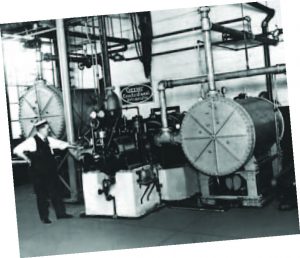
The Newark-based Carrier Engineering Company develops the first AC unit capable of cooling offices, stores and theaters. The company’s Centrifugal Chiller revolutionizes the air conditioning industry.

The State Theatre, designed by architect Thomas Lamb, opens in New Brunswick. Admission is a quarter and the first film screened is White Oak, starring cowboy hero William S. Hart.

New Brunswick stride piano pioneer James P. Johnson records four historic songs—“Harlem Strut,” “Keep Off the Grass,” “Carolina Shout” and “Worried and Lonesome Blues”—that bridge the gap between Ragtime and Jazz.
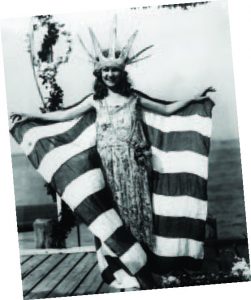
Atlantic City hosts a Golden Mermaid beauty pageant to attract tourists during Labor Day week. Margaret Gorman of Washington DC is the winner, with audience votes counting for 50% of the final score. A year later, the competition is renamed Miss America.
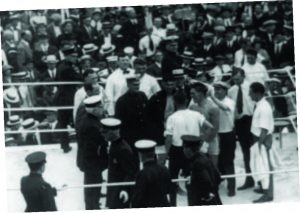
The first “Million Dollar” prizefight is held in Jersey City between world heavyweight champion Jack Dempsey and world light heavyweight champ Georges Carpentier. More than 80,000 fans squeeze into a specially constructed arena to watch Dempsey score a fourth-round knockout.

The Port Authority is created to coordinate activity of New Jersey and New York ports, bridges, highways and tunnels. The need for centralized oversight became obvious when military troop movement choked the region’s infrastructure during World War I.

All-American Arthur Loeb leads the Princeton Tigers basketball team into battle in what proves to be their first conference-championship season. Loeb’s 203 successful free throws would stand as a school record for more than four decades.
On October 26th, mental health advocate Jesse Close and journalist Jack Ford will discuss the importance of “Easing the Behavioral Health Stigma” at the Trinitas Health Foundation’s virtual Peace of Mind Event, with proceeds helping Trinitas expand its inpatient unit for adults dually diagnosed with intellectual/developmental disabilities and severe mental illness—New Jersey’s only inpatient facility that cares for these patients. Close, the younger sister of actress Glenn Close, is a writer, photographer and mental health advocate whose own battle with bipolar disorder illustrates the critical need for early diagnosis and treatment. She speaks with great passion and humor on a subject with which she is intimately familiar.
EDGE: Something that friends and family and co-workers have come to understand about people struggling with bipolar disorder is that it manifests a little differently for each individual, and also what works as a treatment now may not work as well a week or a month or a year from now. Has that been your experience?

www.istockphoto.com
Jessie Close: Yes. Just recently, in fact, I have started getting off Lithium and onto another drug. It’s going to take a while. I’m still on my full dose of Lithium so I’m not sure how my psychiatrist is going to pull this off. I didn’t realize that Lithium can be quite dangerous if you “cold turkey” it. Luckily, I’m not doing that.
EDGE: You were diagnosed at 50, having gone more than two decades undiagnosed. How did that continue for so long?
JC: I remember as a teenager being sent to live with my older sister, Tina, while I was on a trip with my parents to Africa—I didn’t do well over there—I said to her, “I’d really like to talk to a psychiatrist.” She said, “Oh, we don’t do that in our family.”
EDGE: Was that a New England thing?

JC: Yeah, yeah. Stiff upper lip, you know. However, I knew there was something wrong. I was born in 1953 and the stories I’ve heard from that era are about people having lobotomies. We weren’t respected as people. We were “crazies.” I’m so happy that so many young people are now getting help sooner than later. Bipolar disorder can hit young men from around 17 years old up, while for women it usually hits us in our 20s, sometimes earlier. I don’t know why that is.
EDGE: Do you think the healthcare system in this country, as currently constructed, is adequately equipped to deal with mental illness?
JC: I would hope so. But we’ve had a running battle for years with our hospital here in Bozeman, Montana, trying to get them to create a mental health unit, and they’re just fighting it and fighting it. If you have Apple TV, you can watch a show Glenn and I did called The Me You Can’t See. It’s done really well. There is a sequence in that show where the hospital rep says, “We want it to be perfect.” My sister pipes up and asks, “How can it be perfect if you haven’t even started?”
EDGE: During the COVID-19 shutdown, a lot of the people who might have noticed someone with a bipolar disorder going off the rails no longer had regular face-to-face contact, where they could check in or intervene. Is that one of the under-told stories of the pandemic?
JC: I think the pandemic has caused a lot more mental illness. I was fortunate that Glenn lives nextdoor so we had each other, and my daughter and older son, Calen, were here. But back in March 2020, when we started to isolate, I found it very difficult to just be in my home.

EDGE: Calen is schizophrenic.
JC: Yes. My eldest son, Calen, was diagnosed with schizophrenia at age 18. He went off the rails at 17 and we didn’t know what was happening. We went to McLean Hospital in Belmont, Massachusetts and met with the Director of the Psychology Research Lab, Dr. Deborah Levy, who unfortunately has since passed away. She studied our family for four years, took blood and tissue samples, and ran the data through her colleagues at McLean. She was able to show how genetic mental illness really is. She described my mother as a “mosaic” because she had three children without mental illness and then she passed it to me. I had three children and passed it on to Calen in the form of schizophrenia. He went to McLean for two years. He was 19 when he went and 21 when he came home and early intervention helped him enormously. He’s an artist and writer now and he takes his meds—you would never suspect that he has schizophrenia.
EDGE: What event precipitated your finally seeking treatment?
JC: It was after a family gathering in Wyoming, where my parents had a house, and I was about to drive with my daughter back up to Montana and I knew I had to say something. I went to Glenn and said, “I cannot stop thinking about killing myself. It’s this constant, monstrous thing saying kill yourself kill yourself kill yourself.” A week later I was at Belmont.
EDGE: Had you had the benefit of an early intervention, how do you think that would have changed things?
JC: Well, I wouldn’t have had five husbands [laughs] that’s for sure! When I speak at events like Peace of Mind, I ask, “Who in this audience has been married five times?” So far no one has raised their hand.
EDGE: My mother was married five times…but I suspect it was because she was a narcissist. Anyway, going forward now, even if no one raises their hand, at least you can say you know someone!
JC: [laughs] Well, I so wish I had been diagnosed earlier because I know I wouldn’t have had five husbands. I was out of my mind most of the time. I haven’t been with a man since 2004 and I’m very happy about that. I’ve gotten so much done. I’ve had shows with my drawings, I’m getting ready to send a new novel to my agent, I have two photography projects going and I can help with my three grandchildren. I attribute all of that to being on the right medication. But, yeah, I do have very deep regret that I wasn’t diagnosed sooner. I’m pushing 70 for God’s sake.
EDGE: For individuals with a bipolar diagnosis, a common trigger is seeing their siblings have success or just having a good time. Was this something you experienced as Glenn’s entertainment career unfolded?
JC: It wasn’t much of a factor in my case. I saw how hard she works. She has to travel, remember lines—it’s a brutal career. She has done so well because she works her butt off. Glenn is six years older than me and has always been my big sister. I remember like it was yesterday how she would take me up to her room, where she had a blackboard. She taught me how to do the letter “i” and I loved the dot then and I love it now. She was very good to me and continues to be.

www.istockphoto.com
EDGE: You wrote a book entitled Resilience. How do you define that word?
JC: I was resilient because I didn’t commit suicide. I’ve had three attempts; thank goodness they were all thwarted. There is a scene in the book when I was married to my last husband when we were living way out in the boonies in Montana. I’d made a mental note he’d left his handgun on the seat of his truck—he usually kept it locked up. I got drunk and went out and was about to open the door and thought to myself, All three of my children will hear the gun go off and come outside and see me. I just couldn’t do that to them. So my kids “saved” me. Later, in 2004, after that husband fled, I finally went to the hospital and got help. That’s when they started me on Lithium.
EDGE: Beyond getting the right medication, how did that experience change you?
JC: Being around other people with mental illness was so wonderful, because you all speak the same language. It was amazing.
EDGE: When you appear at events like Peace of Mind, what do you want the take-away to be for the audience?
JC: I want to open their eyes to the fact that those of us who are mentally ill are human. We have the same feelings as everybody else…they might just get exaggerated. I want them to laugh, I want them to realize in their gut that, if you treat people with mental illness with love and kindness—and understand that they can get help—that it’s quite amazing how medication gives our brains what they need and turns us around. And if there is someone in the audience who is concerned about a family member, I hope after listening to me they will do something about it. EDGE
Editor’s Note: For more information on Peace of Mind, visit trinitaspeace.givesmart.com. For tickets, call (908) 994–8249. Trinitas operates one of the most highly respected and comprehensive departments of Behavioral Health & Psychiatry in New Jersey. Services are offered along a full continuum of care, with specialized services available for adults, children, adolescents and their families, as well as services for those with various substance use disorders. In addition to operating a 98-bed inpatient facility, the medical center provides almost 200,000 outpatient behavioral health visits annually.
In the world of stroke prevention, the odds are in your favor.
If you found a way to increase your retirement nest egg by 80% with a few tweaks to your investment strategy, you’d drop everything and get on the phone to your broker, wouldn’t you? Or, if you knew that you had an 80% chance of avoiding a serious car accident by altering some of your driving habits, you’d make those changes, too, right? There are no guarantees in life, of course, but when it comes to your health, there are some powerful ways to swing the percentages in your favor.
The problem is that, until you experience these numbers personally—until it’s your life on the line and the changes are ones you have to make—odds and percentages are just numbers. Which means they are easy for busy people to ignore. For me, that changed the day, during a routine physical, that I learned high blood pressure was putting me at real risk for a stroke.
Yocasta Corona (above), a co-worker at Trinitas, is the Stroke Program Coordinator. She deals with life-and-death numbers all day and every one of them tells her something different. Is her favorite number 80? I’m beginning to believe that it is.
“Eighty percent of strokes,” she says, “can be prevented by actions that are 100% within our control. Those are amazingly good odds.”

Stroke awareness—specifically contributing factors such as being overweight, suffering from high blood pressure or having a family history of stroke—have come into sharp focus in recent years. Trinitas has played a critical role in the community education effort on how to recognize the signs of stroke and, perhaps more importantly, how to prevent them in the first place.
“Risk factors like age, sex and ethnicity are uncontrollable risk factors,” Corona points out. “And yet, as much as 80% of strokes can be prevented through lifestyle changes, including improved diet, increased exercise, smoking cessation, and less alcohol consumption.”
One in four people will suffer a stroke event in their lifetime, she adds, citing data from the American Stroke Association.
Blood pressure is the single most controllable contributor to strokes and is the fifth-leading cause of death in the U.S. each year. Managing blood pressure through diet, exercise, and, if necessary, medication can be especially critical for people who may not even realize they are at risk, like me!
After my high blood pressure reading, I decided to focus on supplementing for the vitamin B12 and D deficiencies that my bloodwork revealed. But it wasn’t long before my body sent me a less subtle warning sign: I was in my office and it was almost time to go home when I suddenly felt panicky for no apparent reason. Anxiety runs in my family, so I could have chosen to pass it off as a panic attack. But then, high blood pressure is also a trait many of my elders share. I wasn’t thinking about any of this. Instead, I began having a telepathic conversation with my husband, who was suddenly speaking rather loudly in my head, telling me to stop in to see the doctor before going home.
“I don’t feel well,” I reported to the RN in the employee health office. When she took my blood pressure, her eyes got wide: “Umm…it’s 200 over 95.”
Seconds later, she was marching me down the hall to see a doctor, who prescribed medication. Soon after that I saw a cardiologist and had a series of tests that cleared me of any immediate danger—so long as I take my medication, eat better and exercise.
I still wonder what might have happened had I assumed it was just a panic attack. What if I’d been driving and had a stroke?
Think Fast, Act F.A.S.T.
I think it is worth mentioning that the initial reason I had my BP checked was that another Trinitas staff member had suffered a stroke and I couldn’t stop thinking about her story of survival. Lemons, she insisted, may have made the difference between life and death.
She was washing lemons in her kitchen one afternoon and noticed she was having difficulty grasping them. Her son could tell something was wrong and when she tried to tell him she was fine—that he was overreacting—she was making only incoherent sounds. He wasted no time calling 9-1-1. By the time the paramedics arrived, her face had drooped on the right side, the same side as the hand that couldn’t grip the lemons. Their F.A.S.T. diagnosis confirmed it: She was having a stroke. She made it to the hospital in time, avoiding any serious long-term complications.
F.A.S.T. stands for Face, Arm, Speech, Time. When someone’s face droops, their arm weakens, and they start slurring their speech, it’s time to call 9-1-1.

www.istockphoto.com
“Getting F.A.S.T. care can make the difference between recovery and disability,” Corona says. “Time is especially critical.”
Earlier this year, yet another staff member at Trinitas—in her early 50s with newly diagnosed hypertension —arrived at work with a bad headache. A co-worker noticed she was having difficulty speaking and knew right away something was off. She called for the Rapid Response Team to activate a Code Stroke. Quick care enabled the team to treat her effectively and aggressively, which led to a full recovery.
“She hadn’t had a chance to fill the prescription for blood pressure medication,” says Corona, noting that otherwise the stroke could have been averted. “In addition to her blood pressure, she was also a smoker with a family history of stroke. While that genetic component can’t be controlled, kicking the smoking habit, starting on medication, and taking steps like meditating to de-stress could have all dramatically decreased the odds that she’d be a stroke victim.”
Since my own hypertension diagnosis, I have worked to swing the odds in my favor by making important lifestyle changes. Although I never smoked and am not overweight, I recognize that I’m still at risk. I know my body, but I haven’t always listened carefully enough to what it was trying to tell me. Now I’m doubly conscientious about exercising and paying attention to the signals. I’m also doubly medicated, thanks to the 24-hour monitoring of my blood pressure that indicated numbers that were still too high, even with medication.
Do I consider myself a success story? Absolutely.
And I hope you start taking steps today to become one, too. EDGE
Editor’s Note: Trinitas is recognized as a Primary Stroke Center by the American Heart Association/ American Stroke Association.



History all too often snubbed women who were ready to do battle for recognition of their work. All the more reason, then, for their ever-advancing artistic fortitude. Contemporary women artists are standing their ground—even on the walls. Beverly McCutcheon’s mixed-media collages are sensual “Wallflowers,” as she ironically calls them. Who am I? What’s my name? What is my purpose? Questions leap to the fore of McCutcheon’s passionate style. Each of her portraits serves up a slice of the universal soul. And their truth keeps marching on.



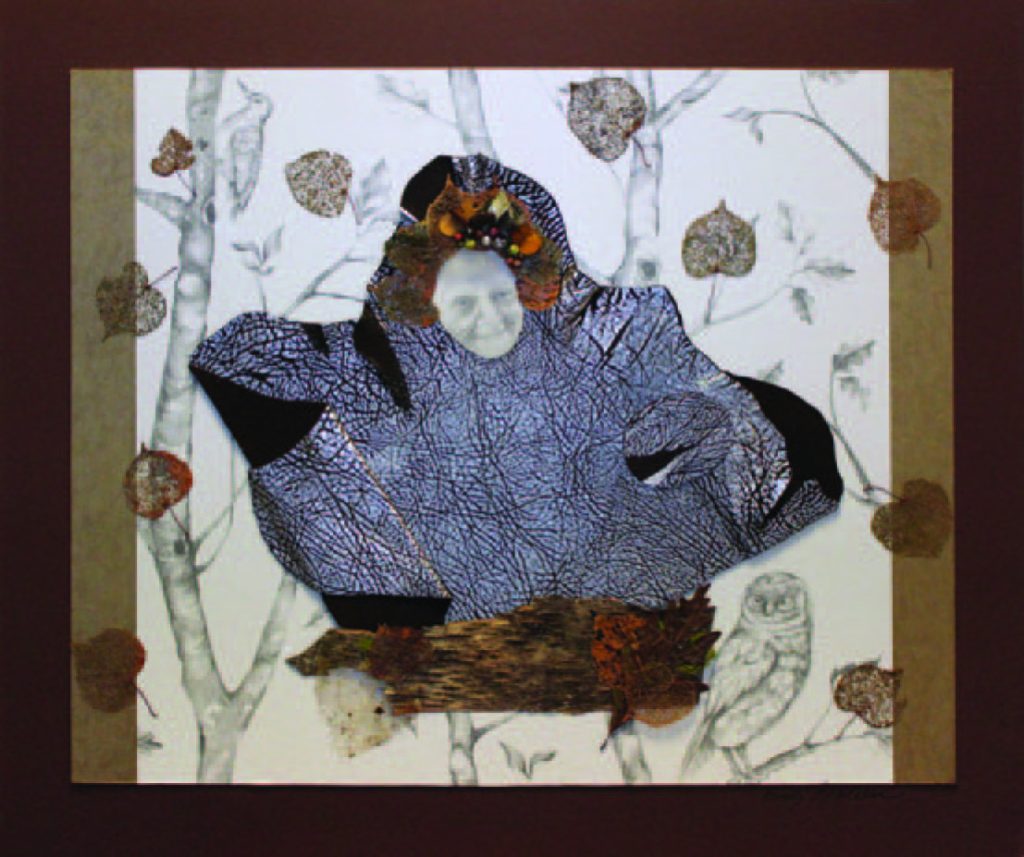






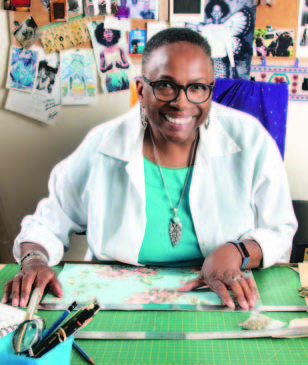
Beverly McCutcheon, a staunch New Jerseyan of East Orange, synthesizes images of women, some floating in their unique environments, others meditating, striving for unmitigated beauty or simply to be seen and heard. A graduate of Fisk University in Tennessee who has studied with artists including Jonathan Talbot, David Driscoll, and Martin Puryear, McCutcheon has exhibited work throughout New Jersey, New York City, and in New Orleans. The mother of two, McCutcheon emanates a powerful force that lodges in human consciousness. So much of the human condition emerges in her complex paintings, sculptures and collages. You can hear incorrigible determination when she says, “I don’t even care if people think my work is good or bad. I’ve GOT to do it anyway!”
—Tova Navarra
The amount of work that goes into creating a realistic movie or television scene, a high-concept music video or a flawless fashion spread is absolutely staggering. The idea may start on a storyboard in Hollywood or on Madison Avenue, but when it comes time to execute, the rubber truly hits the road when the actual shoot begins. Zen Space in Passaic (did you ever dream you’d see those words sharing the same sentence?) is becoming a go-to choice for production companies thanks to the vision of Glenn Schuster, a longtime location scout and manager who transformed a gritty warehouse space on Brighton Avenue into 12,000 square feet of sunny, open loft space—and equipped it with all the extras that make film-crew location managers smile.
“I spent four years, on and off, looking for a wow-factor place that checked all the boxes someone in my business would be looking for,” Schuster says. “An inspiring physical space that’s easy to access, quiet but still close to New York, with parking and all of the amenities I knew a production crew used to working in hectic, stressful environments would appreciate.”

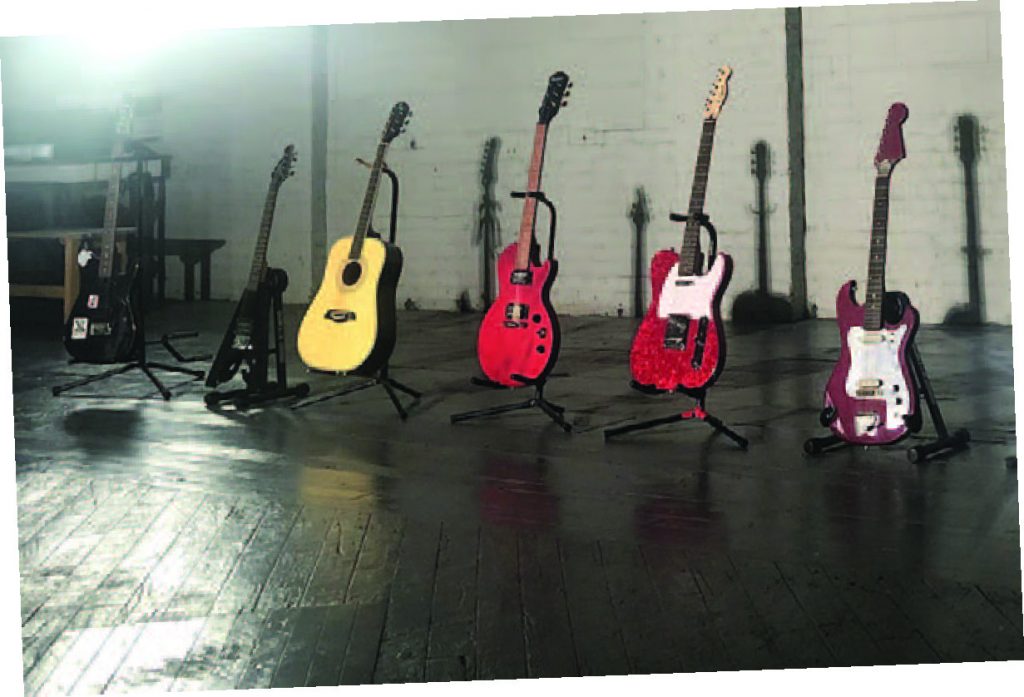
The space features soaring ceilings with hardwood floors and white brick walls, lots of interesting props and furniture and all of the little things (like steamers, wardrobe racks, hair/makeup and green rooms, tables and chairs, an espresso machine) that save time and money and reduce anxiety. The location is versatile, to say the least. That being said, there is plenty of urban grit available for cop shows and hip-hop videos. The projects shot at Zen Space recently include an episode of The Equalizer, starring Queen Latifah, a segment of Nightline, commercials ranging from Roomba to Hershey’s to Dillard’s, and a music video by Meek Mill, whose 20 million Instagram followers eyed his posts from Passaic.
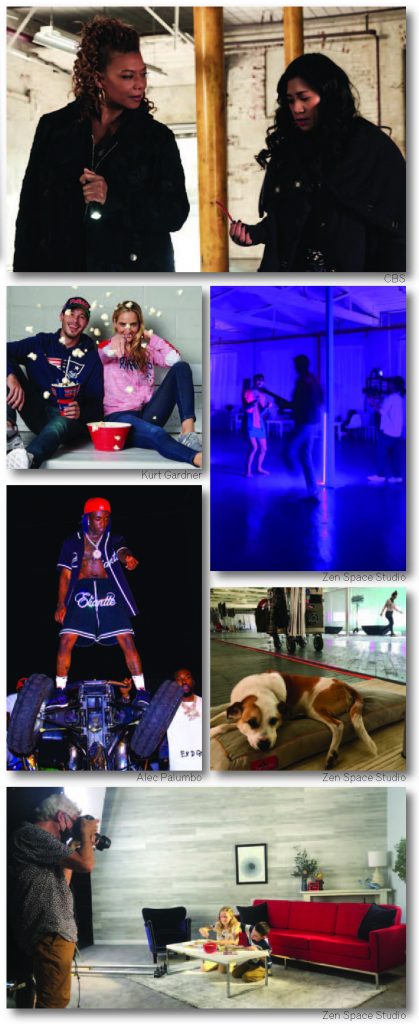
“The Zen Space Studio name comes from the feeling of calmness you get when you walk in, where you know you can relax, and where we are able to say yes to almost anything a client wants,” explains Schuster, who lives nearby in Montclair. “In the short time we’ve been open, we have become an appealing option for everything from small commercial shoots to big-budget projects with A-list talent.”
For more photos visit ZenSpaceStudio.com.
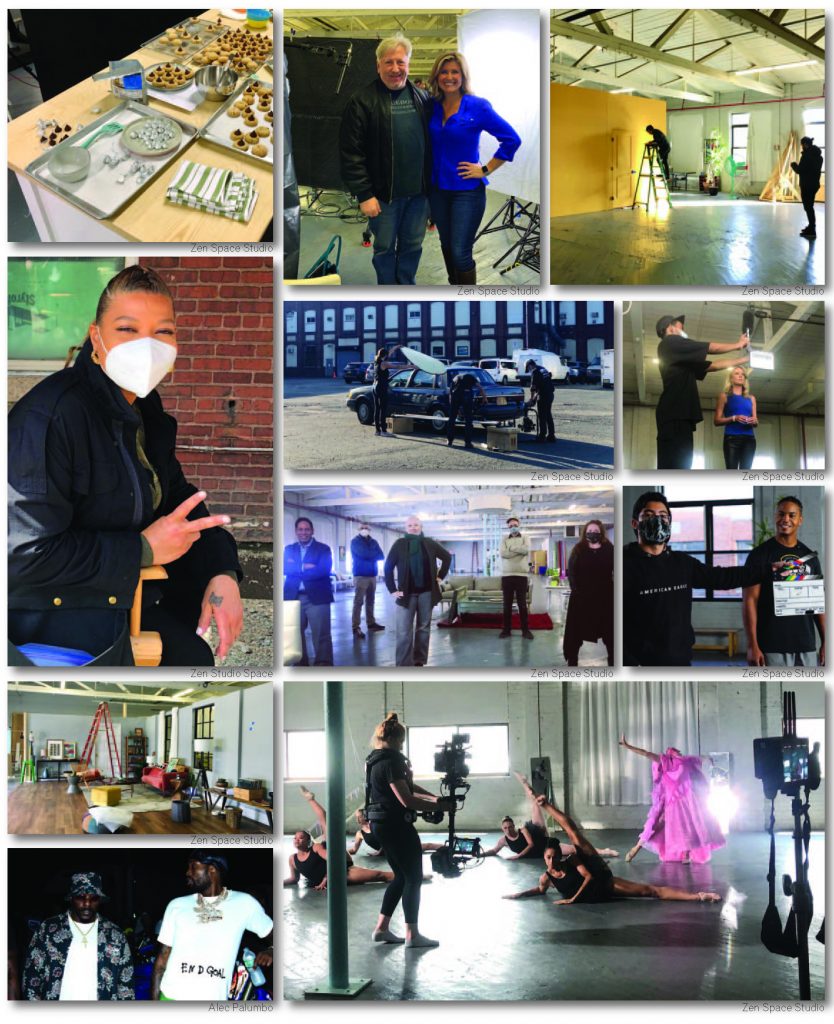
A beginner’s guide to tutoring.
As a New Englander in a small southern liberal arts college, I was intrigued by the small but natural differences in the way my classmates spoke. It wasn’t just “y’all”—in addition to their inflections and accents, there were phrases that I’d never heard before, phrases that made total sense to my peers and none to me. Twenty years later, one of these phrases has stayed with me: when a grade came back in a class, instead of asking “What did you get?” my southern friends asked, “What did you make?”
As in, “What did you make on the Econ midterm?” I loved that. It’s easy to think of a grade as something a teacher “gives” to a student, instead of realizing that a grade, more than anything else, is a product of the student’s creation.

www.istockphoto.com
After two decades as a classroom teacher, I can appreciate even more the symbolism of this phrase, and I make a point to tell my students this quick anecdote at the start of every school year. I think of this distinction often when parents ask me about arranging a tutor for their children. Both as a tutor myself (and as a classroom teacher whose students occasionally need additional help outside the classroom), I’ve come to realize that the best tutoring experiences occur when the student and parent understand that tutoring is not a Band-Aid. Instead, it’s an opportunity for a student to make themselves better, to change both in habit and philosophy. Tutoring is, to riff on the phrase, whatever the student is willing to make of it.
To clarify, there are a lot of kinds of tutors—tutors for academic remediation are the first that come to mind, but there are also tutors who work with students in lower-stakes situations. When a child is doing so well in school that their parents decide to supplement their education with additional support, tutoring becomes less stressful and more engaging—like a piano lesson for an accomplished musician or a training session for a skilled soccer player. There are tutors who help students in non-academic ways as well. (I was once hired by a parent to give “social-awareness” lessons to their child. We covered some basics like how to shake hands, how to look people in the eye, how to make polite conversation, how to write a thank-you note.) Like enrichment tutoring, the stakes are low in these situations. The flip side is a tutoring situation in which the stakes are very high and there is a specific, external goal in mind. Most often this occurs with tutors who specialize in preparing students for certain tests—the SAT, for example—and this kind of tutoring is more formulaic and has a clear end-goal.

www.istockphoto.com
But tutoring when a student is having difficulty in school is the most common kind, and it can be fraught right from the beginning. One of the first questions I’m often asked by parents when their child is struggling in school is: “Do we need to hire a tutor?” Some parents ask this question with a lot of trepidation, as if the answer is a kind of loaded diagnosis. Others ask the question clearly hoping my answer is “yes,” because then at least they’ll have what looks like a way to fix a problem. But hiring a tutor to occupy a weekly hour of a student’s life doesn’t instantly solve an issue, and so the tutoring question is one I have to weigh carefully before I answer. Because tutoring works really well in some situations and not so well in others. Sure, a lot depends on the quality of the tutor—their knowledge and experience and expertise. But there are a number of other factors at play.
In a perfect world, parents don’t have to make this call on their own: their child’s school does the responsible thing: after observing the student for a few weeks and meeting with a team of professionals, the school administration recommends that the child receive some academic help outside of school. Maybe the school even has a team of tutors whom they recommend, seasoned educators who know what they’re doing. And maybe, after a handful of sessions over the course of a few weeks, whatever academic issue the child was having disappears. This is an ideal scenario, but unfortunately, it’s not how it often plays out. In fact, it’s a bit of a fantasy.
Instead, the decision to hire a tutor usually comes in response to pain. Parents see their child struggling at home and it hurts. There is nightly pushback and fighting and exasperation: tears at the kitchen table because they don’t understand how to do their homework, a crumpled test at the bottom of their bookbag. Maybe the child becomes secretive about their performance in school; when their peers talk about their marks on the Spanish quiz or their study plan for the upcoming Math exam, the child clams up. Parents turn to tutoring as a kind of last resort.

www.istockphoto.com
I would hope it doesn’t get to that. Actually, I would hope that every parent would consider hiring a tutor for their child, even if they don’t think they “need to.” Too often, parents rely on non-academic extracurriculars to round out their child’s schedule. Instead of signing a child up for that third sport, why not have them work with an academic tutor who could take them beyond wherever they’re going in the classroom?
A tutor should commit to working with a child regularly, but I would avoid meeting more often than once a week. I have found that 45-minute sessions are best for middle-school and high-school-aged students; anything longer can be a drag. I’m happy to travel to students’ homes to work with them, but I do ask that there is a dedicated and semi-private workspace is made available. Parents certainly want to avoid having their child work with a tutor in the middle of the house, which, depending on the family, can seem like Grand Central Station. Though parents like to “listen in” during a tutoring session, I find that students are less willing to engage if they know that Mom or Dad is listening from the hallway.
There have been a few times when I’ve worked privately with groups of students, particularly when we’ve read the same novel and the session operates as a kind of book club. This can work if the children all know each other and are comfortable with speaking up in front of their peers. Certainly, students benefit from attending another academic experience that mimics a small-sized class. However, though this kind of tutoring can seem beneficial and less intense, I don’t see the individual growth in the participants that’s often found in one-on-one tutoring.
It helps to see tutoring as a temporary experience for a finite amount of time. Both for the tutor and the student, understanding that their work together is not going to last forever can add urgency and meaning to their sessions. If I know I’m only going to meet with a student six times, I can set what I want to accomplish in that time period, and the family has the opportunity to reassess after we’re done. I can focus on the skills that I’m trying to impart, and our sessions are more likely to stay focused on an end goal. One thing I refuse to do as a tutor is to become the homework police. If students are not intrinsically motivated to complete their work, their parents are the parties most effective in creating change—having a stranger’s encouragement doesn’t seem to make much of a difference. This can be difficult for parents who believe that hiring a tutor “takes it off [their] plate.” Above all else, tutors should never complete a student’s work for them. There’s a clear line between supporting a student and covering for them, and in my experience, parents don’t seem to mind crossing it. I even had a parent ask me to log in to their child’s college application portal and complete all the submissions for them, simply because their child refused to do it herself. Tutors should run away from situations like these, as I did.
Sometimes when I’m calculating grades at the end of a marking period, I notice that despite the two-dozen-or-so assessments over the course of a few months, a student will have almost the exact same average as they did in the previous marking period. The answer, of course, is that the student is the same person they were in the fall, and this is not always a bad thing. It’s hard to change. Expecting quick miracles, especially when children are involved, can be a waste of time. Instead, I’ve learned to look for small, incremental improvements; a student whose average goes from 84% to 88%. These are the kinds of changes that parents can expect from good tutors, given the correct circumstances. EDGE
Have you ever noticed how many BAD movies have the word GOOD in the title? That made us wonder… which films rank as the all-time BEST “good” movies?
The Good Earth 1937

Drought and famine push a Chinese farming family to the brink in the film version of Pearl S. Buck’s moving novel. Luise Rainer and Paul Muni portray their characters in heavy makeup, with Rainer winning an Oscar for her unforgettable work as O-Lan. MGM originally wanted to make the movie in China with an all-Chinese cast, but Chiang Kai-shek and his wife got involved in the negotiations and the studio ended up shooting everything in California, with a mix of Asian and American actors.
Goodbye, Mr. Chips 1939
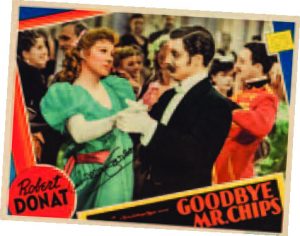
Sam Wood directs Greer Garson and Robert Donat in the story of an English schoolteacher who recalls his tragic romance with a feisty suffragette and endures the horror of the First World War, which annihilates many of his former pupils. Garson charmed audiences on both sides of the ocean, while Donat gave a jaw-dropping performance that earned him an Oscar as Best Actor. Garson was also nominated but lost to Vivien Leigh, who played Scarlet O’Hara that year in Gone with the Wind.
In the Good Old Summertime 1949
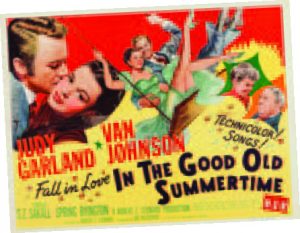
Basically the musical version of You’ve Got Mail (and The Shop Around the Corner), this version is set in turn-of-the-century Chicago, with Judy Garland and Van Johnson playing anonymous pen pals who end up working side-by-side in a music store. Sharp-eyed movie buffs will spot a very old Buster Keaton and a very young Liza Minelli in this film.
The Good, the Bad and the Ugly 1966
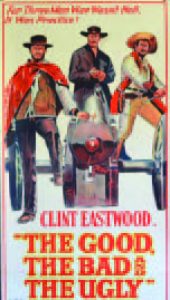
A masterpiece of the Spaghetti Western era, Sergio Leone’s film followed two other successful Clint Eastwood flicks: A Fistful of Dollars and For a Few Dollars More. Eastwood (aka The Man with No Name) plays the “Good,” Lee Van Cleef (a Jersey boy!) the “Bad” and Eli Wallach the “Ugly.” Ignored by critics at the time, it later made Time’s list of 100 Greatest Movies.
The Long Goodbye 1973

Elliott Gould stars as detective Philip Marlowe in the motion picture version of Raymond Chandler’s 1953 book, which was moved to 1970s Hollywood. Dan Blocker (TV’s Hoss) was supposed to play one of the leads, but died of a heart attack before filming started. He was replaced by New Jersey-born Sterling Hayden. Jim Bouton and Arnold Schwarzenegger also have small roles in this Robert Altman film. Gould’s acting style proved perfect for the updated version of Chandler’s iconic detective.
The Goodbye Girl 1977
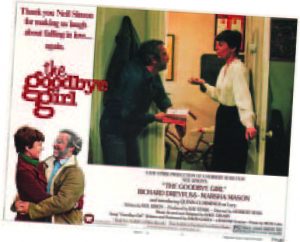
Neil Simon’s romantic comedy was the first to surpass $100 million in ticket sales, thanks to flawless, relatable performances by Marsha Mason and Richard Dreyfuss —playing two flawed entertainers struggling to relate. Simon is generous with his punchlines, which helps 10-year-old Quinn Cummings nearly steal the whole picture.
Looking for Mr. Goodbar 1977

Diane Keaton stars in the film adaptation of Judith Rossner’s sexual thriller, which was inspired by the murder of New Jersey schoolteacher Roseann Quinn. The movie is a lurid snapshot of nightclub life in the 1970s, but all these years later it is still Keaton who steals every scene in what many consider to be her best-ever performance. A trio of future stars—LeVar Burton, Tom Berenger and Richard Gere—got their first quality roles in this flick.
Good Morning, Vietnam 1987
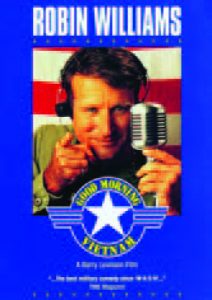
Director Barry Levinson unleashes Robin Williams in one of the funniest movies of the 1980s. Improvising most of his scenes, Williams conveys the absurdity, pain and hypocrisy of America’s strategy in Southeast Asia as Adrian Cronauer, a wacky DJ assigned to the Armed Forces Radio operation in Saigon. Bruno Kirby, Forrest Whitaker, J.T. Walsh, Robert Wuhl and “Uncle Floyd” Vivino are brilliant in supporting roles, while Williams earned a Golden Globe for his unforgettable performance.
GoodFellas 1990
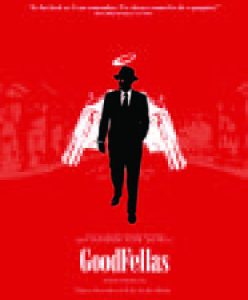
This Martin Scorcese mob epic follows Henry Hill’s rise and fall from the 1950s to the 1980s. Lots of New Jersey actors scored key roles, including Ray Liotta as Henry, Frank Vincent as Billy Batts and Joe Pesci, who absolutely hijacks the movie as Tommy DeVito. Nominated for six Oscars, with Pesci winning Best Supporting Actor.
A Few Good Men 1992
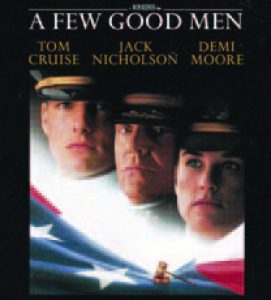
Jack Nicholson is sensational as keg-of-dynamite USMC Colonel Nathan Jessup, with Tom Cruise and Demi Moore playing JAG lawyers lighting his fuse. When Jack blows (“You can’t handle the truth!”) it makes for one of history’s most-quoted lines. Nicholson was nominated for a Supporting Actors Oscar in a movie featuring outstanding performances by Kevin Bacon, Kiefer Sutherland, Cuba Gooding Jr., Kevin Pollak, Noah Wylie, J.T. Walsh, Michael DeLorenzo and Christopher Guest.
As Good As It Gets 1997

Jack Nicholson plays a famous author with crippling OCD, who is teased out of his shell by a waitress (Helen Hunt), a neighbor (Greg Kinnear) and Verdell, the neighbor’s dog. The quirky, complex and unpredictable story was a huge hit, grossing more than $300 million worldwide, with Nicholson and Hunt winning Academy Awards and Kinnear earning a Best Supporting nomination.
Midnight in the Garden of Good and Evil 1997

Kevin Spacey and John Cusack make for an unlikely pairing in Clint Eastwood’s adaptation of the popular book by John Berendt about the seamy side of life in Savannah, Georgia. Jude Law is very good in one of his first big roles—and yes, that’s James Gandolfini playing a cook—while several real-life characters from the book portray themselves on-screen, including transgender performer Lady Chablis. The movie bombed at the box office but earned a devoted cult following.
Good Will Hunting 1997
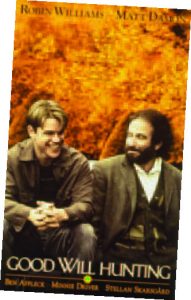
The breakthrough movie for both Matt Damon and Ben Affleck—who co-wrote and co-starred with Robin Williams—the story follows genius janitor Will Hunting as he comes to terms with his friends, his past and his future. Williams won a Best Supporting Oscar while 20-somethings Damon and Affleck took home statues for their screenplay.
Good Night, and Good Luck 2005

David Strathairn is brilliant as Edward R. Murrow holding the line against Senator Joseph McCarthy in 1953. George Clooney co-wrote and directed the moody, black-and-white film, which also features Patricia Clarkson, Frank Langella, Jeff Daniels and Robert Downey, Jr—and a killer soundtrack recorded by Dianne Reeves. It was nominated for six Academy Awards, including Best Picture, Actor, Director and Screenplay. EDGE
Tell me about Jan Levinson, the emotionally complicated sometimes-girlfriend of Michael Scott on The Office. How did you play that character without turning fans against her?
I love that you can see into all those layers. I don’t know that I was trying to walk that line you talk about, but to me, from the minute I said the first line as Jan Levinson I sensed she was very complex. Maybe it was just the lucky combination of the writing of Jan and me playing her.
You just finished your first day on the new season of Dancing with the Stars, didn’t you? How are you feeling?
I’m exhausted, but I feel great. It’s just go, go, go with this show. I haven’t had a day off in two weeks, so I’m like, Okay, so is that the pace? I guess so. Yeah, it’s intense.
How do you know you’re “good to go” when the music starts, as opposed to an acting role? Is it a different mental process?
It is. I had a big “Aha” moment the night before because it’s live television, which is really refreshing and different, something that we don’t get a lot these days. It’s similar to theater in that you have to be on—you have be ready to go when they say go, and you know you’re going to get one chance. With film and television, it’s different in the sense that you have to be ready to go…but you also know that you have time to finesse. Sometimes with film and television, you show up and run through it a couple of times, and it’s out of order, and you have to bring all of your skillsets to prepare your emotional self—where your character is in that moment in time and in the arc of the story and the arc of the evolution of the character.
Also, in television and film, you can really communicate so much through your eyes.
And you have lines, and sometimes you have songs. You have more than one scene to show people who the character is. Here, you have one moment. You have one chance. You have no lines. It’s in this giant universe of lights and explosions, and they’re barely on your face because they’re watching your body. It’s a much bigger, broader stroke that you have to make as a performer. That was a big realization to me.
Fans may remember you from your starring roles in the film Lambada and the TV series Dirty Dancing. I guess Dancing with the Stars was not your first tango.
I started acting professionally at six, and I’d started dancing at five. [When I was younger] I think I would have told you that acting and singing and songwriting were my hobbies, and that I was going to be a ballerina. In my little girl mind, that was what I thought I was going to do. I think Dancing with the Stars is this wonderful opportunity to reawaken my little girl fantasy and dream. It’s the closest I’ll ever come to being a ballerina.
Editor’s Note: This Q&A was conducted by Gerry Strauss. Gerry spent a little more time with Melora and they chatted about her roles on Transparent and The Bold Type, as well as her work as a director on an upcoming documentary based on her friend Paula Cole’s iconic song “Where Have All the Cowboys Gone?”
EDGE takes you inside the area’s most creative kitchens.
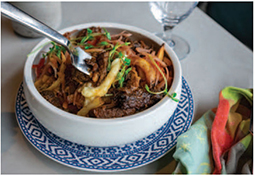 Grain & Cane Bar and Table • Brisket Poutine
Grain & Cane Bar and Table • Brisket Poutine
250 Connell Drive • BERKELEY HEIGHTS
(908) 897-1920 • grainandcane.com
A new twist on a classic, our Brisket Poutine is savory fall comfort food in its highest form. Our French fries are hand-cut daily and fried to order, smothered in gravy, topped with melted cheese curd, pickled chiles and brisket that simply melts in your mouth. This dish is ideal for sharing with the table.
— Chef Louis Bayla
 The Thirsty Turtle • Pork Tenderloin Special
The Thirsty Turtle • Pork Tenderloin Special
1-7 South Avenue W. • CRANFORD
(908) 324-4140 • thirstyturtle.com
Our food specials amaze! I work tirelessly to bring you the best weekly meat, fish and pasta specials. Follow us on social media to get all of the most current updates!
— Chef Rich Crisonio
 The Thirsty Turtle • Brownie Sundae
The Thirsty Turtle • Brownie Sundae
186 Columbia Turnpike • FLORHAM PARK
(973) 845-6300 • thirstyturtle.com
Check out our awesome desserts brought to you by our committed staff. The variety amazes as does the taste!
— Chef Dennis Peralta
 The Famished Frog • Mango Guac
The Famished Frog • Mango Guac
18 Washington Street • MORRISTOWN
(973) 540-9601 • famishedfrog.com
Our refreshing Mango Guac is sure to bring the taste of the Southwest to Morristown.
— Chef Ken Raymond
 Arirang Hibachi Steakhouse • Pork Belly Bao Buns
Arirang Hibachi Steakhouse • Pork Belly Bao Buns
1230 Route 22 West • MOUNTAINSIDE
(908) 518-9733 • partyonthegrill.com
Tender pork belly, hoisin sauce and pickled cucumber served on a Chinese bun.
 LongHorn Steakhouse • Outlaw Ribeye
LongHorn Steakhouse • Outlaw Ribeye
272 Route 22 West • SPRINGFIELD
(973) 315-2049 • longhornsteakhouse.com
Join us for our “speedy affordable lunches” or dinner. We suggest you try our fresh, never frozen, 20 oz. bone-in Outlaw Ribeye—featuring juicy marbling that is perfectly seasoned and fire-grilled by our expert Grill Masters. Make sure to also try our amazing chicken and seafood dishes, as well.
— Ed Durina, Managing Partner
 Ursino Steakhouse & Tavern • House Carved 16oz New York Strip Steak
Ursino Steakhouse & Tavern • House Carved 16oz New York Strip Steak
1075 Morris Avenue • UNION
(908) 977-9699 • ursinosteakhouse.com
Be it a sizzling filet in the steakhouse or our signature burger in the tavern upstairs, Ursino is sure to please the most selective palates. Our carefully composed menus feature fresh, seasonal ingredients and reflect the passion we put into each and every meal we serve.
Welcome Back!
The restaurants featured in this section are open for business and are serving customers in compliance with state regulations. Many created special items ideal for take-out and delivery and have kept them on the menu—we encourage you to visit them online.
Do you have a story about a favorite restaurant going the extra mile during the pandemic? Post it on our Facebook page and we’ll make sure to share it with our readers!
These daring fast-food concoctions had high hopes… but barely made it out of the Drive-Thru.
The 2020’s are technically my seventh decade as a fast-food connoisseur and, as my GP recently commented, I have the cholesterol and blood sugar to prove it. I am no longer a regular at drive-thru’s because you only get two hearts in a lifetime, but I am still a willing crash-test dummy for anything that sounds new and different, even if it also sounds a little disgusting. Some great ideas have come and gone in my lifetime, as have some horrible ones, and I’ve probably tried them all—including the good, the bad and the ugly. These are the ones that have stuck in my mind. And probably in my descending colon…
Trinitas Medical Group
THE GOOD – “It kills me that they stopped serving these before they could kill me.”
McDLT • McDonald’s • 1984
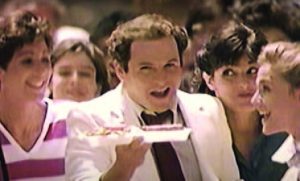
Wait. What? Is that EDGE 2020 cover boy Jason Alexander doing a Broadway-style pitch for Mickey D’s? You know it is! Long before his Seinfeld days, Alexander was hawking McDLT’s on TV (Google the YouTube video). The hot side stayed hot, the cool side stayed cool and the elaborate packaging probably makes up a third of the Great Pacific Garbage Patch. Don’t get me wrong…this was an exceptional fast-food burger, but by the early 1990s all that polystyrene—as well as the equipment that heated the burger side and chilled the lettuce and tomato—was simply unsustainable.
Arch Deluxe • McDonald’s • 1996

A Quarter-Pounder on a potato bun with peppered bacon aimed at sophisticated palates. The hundreds of millions (!!!) McDonald’s spent during a half-decade developing and marketing the Arch Deluxe, which for the record was delicious, missed one small detail: Sophisticated palates don’t slow down for the golden arches.
Moolatte Dairy Queen 2004
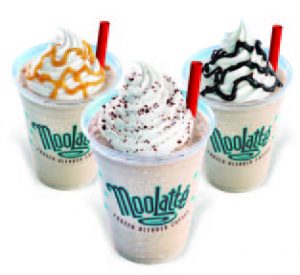
I have been at the table for a number of branding skull sessions in my career and I can say without hesitation that, had I been in the same room with the person who suggested this racist-adjacent product name, I would have dumped my (otherwise delicious) coffee ice cream drink over his or her head.
Enormous Omelet Sandwich Burger King • 2005

In a bid to steal market share from the Egg McMuffin, BK loaded up one of its long chicken sandwich buns with two eggs, bacon, sausage and cheese. You could also add ham in some restaurants. Nothing not to like, right? Well, I thought it was pretty good but, like COVID-19 it tended to kill its host. After some initial success the sandwich suffered from bad press and was discontinued.
Frescata • Wendy’s • 2006

With the sudden rise of Subway, Blimpie and other sandwich chains in the early 2000s, Wendy’s decided to compete by adding a line of deli-style sandwiches to its menu. They were tastier than their better-known competitors, but the sandwiches came out slow and sometimes a little sloppy—and disappeared within two years.
Double Down Kentucky Fried Chicken • 2010

Give KFC a little credit. The colonel knows his customer. That being said, after consuming my first Double Down, I felt good knowing that my wife had just completed a CPR course. When she narrowed her glance and pointed out that the “sandwich” was not a sandwich at all—and contained a full day’s supply of saturated fat, sodium, cheese and bacon—I replied, “Fine, I won’t go back for two days…because I just ate two. Ha!”
French Toaster • Sonic • 2015

I had been watching the two dolts in the Sonic commercials for years before a Sonic popped up near my home in New Jersey. I found the menu uninspiring until I stumbled upon the French Toaster, which was similar to Burger King’s “enormous” sandwich, but with two pieces of French toast instead of a bun. I was in high-cholesterol heaven. But then, just like that, Sonic replaced the best part with Texas toast. Doggone it!
THE BAD – “Was this trip necessary?”
Double R Bar Burger Roy Rogers • 1968
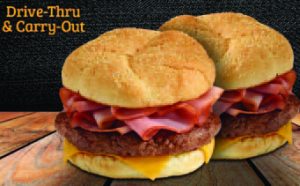
I spent a summer in Pennsylvania in the early 1970s and the only fast-food joint within bike-riding distance was Roy Rogers. Their hamburgers were okay when you loaded ‘em up at the Fixins Bar, but what caught my attention was all the grownups ordering the marquee menu item, the Double-R Bar Burger—a hamburger with ham piled on top. I still don’t know why the word “Bar” was in there; maybe they had all stumbled in from a bar, because I tried one and that would have explained a lot.
Taco Seafood Salad Taco Bell • 1986

I once dated a girl whom everyone I knew disliked intensely…because I figured at least one of them had to be wrong. This was the same thinking that drove me to Taco Bell in the late 1980s to try something that seemed like it couldn’t be as bad as everyone said it was. Without going into further detail, let’s just say that neither experiment ended well.
Mighty Wings McDonald’s • 2013

Often I wonder how many chickens made the ultimate sacrifice so that McDonald’s could discover that their customers don’t have time to figure out where the meat ends and the bone begins. I thought they were pretty good, however they were a little tricky to eat hurtling down the Turnpike at 75 mph.
Big Catch Meal Long John Silver’s • 2013

A Long John Silver’s mall kiosk opened near where I lived and I was genuinely excited to try something that sounded like a sampler of their seafood. Unfortunately, that’s not what it was. The Big Catch was a heavily breaded slab of fish along with some hushpuppies and onion rings, all deep-fried as if they had done something wrong in a past life. Not what I expected or what I wanted. Long John’s critics had a field day with this menu item, which supposedly had 33 grams of trans fat, dubbing it “deadliest catch” and “heart disease on a hook.”
Fish McBites • McDonald’s • 2013

These guys got the Filet-O-Fish so right; I wonder how they got this spin-off so wrong. Were these fishy morsels meant as a change of pace for McNugget aficionados? I was curious enough to order the 15-piece size…but had to surrender a third of the way through. When I brought the rest home, my dog—who I have caught eating out of my cat’s litter box—did not recognize Fish McBites as food.
AND THE UGLY – “Surprisingly good, but no surprise they’re gone.”
Bell Beefer • Taco Bell • 1975-ish

No one quite remembers when the Beefer first arrived at Taco Bell, or maybe no one wants to admit it. The Taco-flavored Sloppy Joe was the chain’s answer to America’s growing appetite for meat on a bun and you know what? It wasn’t terrible, especially if you liked to spice things up with a little hot sauce. Beefer fans who somehow outlived the sandwich know that you can still order it at one of those combo Taco Bell/KFC locations…but you have to wink and ask nicely.
Grilled Cheese Burger Melt Friendly’s • 2010
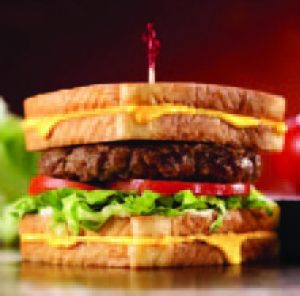
Admittedly, Friendly’s doesn’t exactly fit the fast-food category. But this is a good story. After encountering a long line at my local Five Guys, I kept driving until I arrived at a Friendly’s. I mis-read the menu, thinking I was getting a Grilled Cheeseburger Melt. When the Grilled Cheese Burger (two words) Melt arrived with a thud in front of me, the look on my face was like the Monopoly guy on the “Bank error in your favor card.” Either the cook was on drugs or I was on Candid Camera because my burger was sandwiched between two complete grilled cheese sandwiches. This was an epic work of Brutalist restaurant art. It was sloppy and delicious but I did not make a clean getaway. On my way home I sneezed up (sneezed is not a typo) a fragment of American cheese. How does that even happen? Anyway, I never went back for another one and now my understanding is that they are no longer served.
Bacon Sundae Burger King 2012
Bacon Shake Jack in the Box 2012


Off the top of my head, I cannot think of a single food that is not improved in some way by the addition of bacon. And if a food already has bacon in it then it can only be further improved by an extra piece or two. Which is why I was tempted to try both of these ice-cream-based concoctions. The Burger King sundae featured vanilla ice cream, caramel, bacon bits and an actual slab of bacon. Not to be out-baconed, Jack in the Box debuted its 24-ounce Bacon Shake at about the same time. It featured bacon flavoring only, so it got a thumbs-down from me. The milkshake was part of the chain’s “Love Bacon? Marry It!” campaign. For the record, I was already married but seeing bacon on the side.
McWrap • McDonald’s • 2013

A chicken finger swaddled with lettuce and cheese in a soft tortilla, the McWrap looked a little sad and definitely lacked pizzazz, especially when it unraveled in your lap as you tried to squeeze some sauce into it. However, it was a huge hit in Europe so the company brought it to American McDonald’s, where it was the cheapest thing on the menu. The unintended consequence was that a McWrap took five times longer to assemble than a burger, which clogged drive-thru’s and drove away in-a-hurry customers who might have ordered higher-priced items. I happened to love McWraps as quick, between-meal snacks. But franchisees despised them and they disappeared from the menu a few years ago.
Biscuit Taco • Taco Bell • 2015

I believe that anything that fits in a taco probably belonged in a taco to begin with. I am also a huge fan of biscuits. Not surprisingly, the announcement that Taco Bell had combined the two on its breakfast menu grabbed my attention, especially when I heard you could get a Biscuit Taco with fried chicken and honey-jalapeno sauce. Although the flavors were okay (the chicken was breaded with upcycled tortilla chips), when it emerged from the kitchen, there was something disturbing about its appearance. It looked like a Muppet choking on a piece of fried chicken.
Halloween Whopper Burger King • 2015
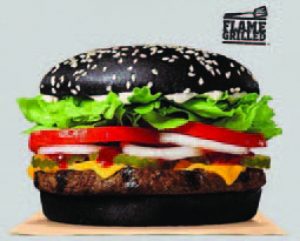
A flame-broiled burger on a pitch-black A1-impregnated bun? What’s not to love. Seriously, I’m asking: What’s not to love? Just because this limited-edition menu item was visually disconcerting, it doesn’t mean it wasn’t delicious. And just because it turned your poop green… Oh. Okay. Now I’m getting it.
Editor’s Note: Although all of the items in this story have definitely been removed from chain restaurant menus, thanks to social media and self-destructive eating habits, almost all have spawned grassroots efforts to bring them back at one time or another. Don’t be surprised to see one or two back in play (probably with different names) in the years to come; the Double-R Bar Burger (which was named in honor of Roy’s ranch) may still be available in a handful of locations. For more thoughts on fast-food fails, visit edgemagonline.com and read about Ray Kroc’s dumbest idea, the problem with pizza and the day a pumpkin bomb hit Japan.
Coming to a kitchen near you…Me!
Everyone has a pandemic story and this is mine. Jenna, my wife, is great at most things. However, on those rare occasions when she is unable to master a task, she gets frustrated quickly. A year ago last summer, she decided to order from one of those boxed-meal, home delivery services that became so popular when all the restaurants were shut down. Because she does not cook, and because I am a career chef, it made sense that I might be helping her out with the dish she was making, scallops and mushroom risotto, which seemed pretty complicated for her. I was ready to step in, but we agreed that ideally we wanted her to learn on her own.
My assumption was that there would be ample guidance in the box, but that was not the case. These meals come with a sheet that has photos and directions laid out in a handful of steps. For my wife, who rarely picks up a frying pan and is not an expert knife user, what was stressful was the number of things going on at once. Sear the scallops. Stir the risotto. Cook the mushrooms. I watched as she became visibly upset trying to put together what should have been a simple dinner for us. A professional chef understands timing, knows when to step in, create order and delegate tasks for the kitchen staff. A novice home cook deserves nothing less.
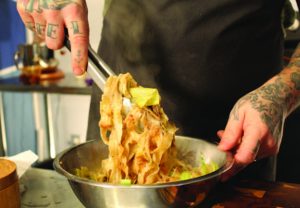
That evening I realized there was tremendous potential for a service where a restaurant chef walked you through a live, highly interactive virtual cooking class so you knew what to do with this box of ingredients that you’ve just unpacked in your kitchen.
Because of the pandemic I wasn’t working and had some time on my hands, so I decided to throw something together and test it out on my friends, including Alexia Merlo, a graphic designer, and Daniel Fiorica, a friend since we were 12 years old (he actually officiated my wedding) who worked in the financial services industry. Both Dan and Alexia would become my partners; they were in that original class and immediately wanted to become a part of it. We named our little venture “Peppr.”
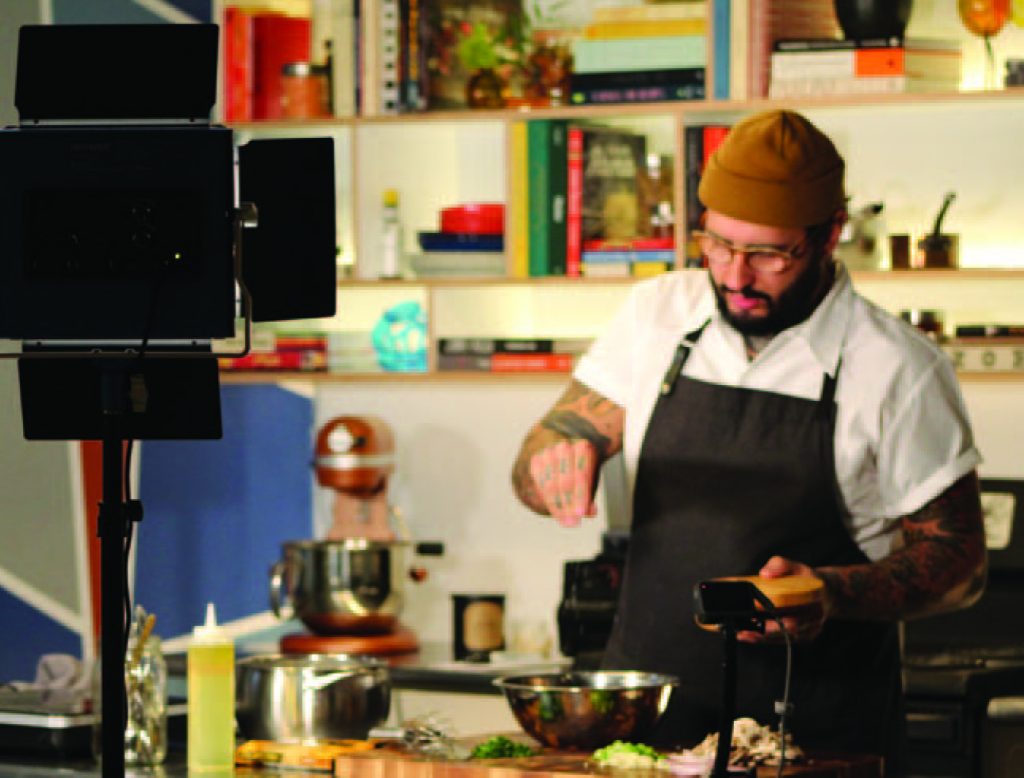
Dan focused on the business side, Alexia created the look and feel of Peppr, and I brought an understanding of the basics of how it would work—including the sourcing of ingredients and creating restaurant-quality recipes—and then bringing a chef’s guidance into somebody’s home so they would feel comfortable cooking things they might not on their own. And anyone anywhere should be able to take a Peppr class, we believed—as long as they were in the U.S. and can take a food delivery, of course.
Chopped
Three years earlier, while working as a sous-chef at Spice Market for Jean-Georges in Manhattan’s meat-packing district, I was invited to compete on the popular Food Network series, Chopped, and was fortunate to become one of the show’s champions. Prior to that, I had been a chef in New Jersey before moving to New York. Initially, I was in a little over my head. I realized that a really good chef in New Jersey makes a really good sous-chef in a top New York restaurant. There is a lot more you need to learn about the culture of New York restaurants to be chef: the volume of everything, how you guide the people you work with, and becoming a manager of human emotions. I learned a ton working in the city and wanted to grow my career when Chopped came along.
It was surreal to even be part a series I’d been watching for years, on a show that every young chef dreams of being on. I had never been in direct competition per se, except for fun stuff we did in kitchens at work, where the chef would grab a bunch of ingredients and see what we’d do with them. You needed to have fun sometimes because it is a hard life. You are in the restaurant more than you’re at home and you have to make a lot of other sacrifices to be in the business, especially to be a chef. You have to find ways to inject some enjoyment into that or it’s completely exhausting.

My goal on Chopped was to do something cool (or just not embarrass myself). It was interesting to be a part of the show and, looking back, it was a growth experience. Suddenly, I was being seen and recognized by strangers at a time when I had just moved from Spice Market to Terroir TriBeca, and people were coming to Terroir specifically to eat my food. It was an interesting transition going from a 400-seat restaurant where we fed a couple thousand people a day to a tiny wine bar, Terroir TriBeca, where I sourced all my ingredients from the green market and fed maybe 200. I became more confident in my abilities and, moving forward, I was able to get positions that I never dreamed would be possible—including my first executive chef job in the city. At the moment, I am executive chef at Buddha-Bar, which opened in TriBeca and has become one of the hottest restaurants in New York City. It’s mind-blowing that everything worked out for me this way. It’s been a wild ride.


Chopped gave me valuable experience in front of a camera, in this case with millions of people watching. So “performing” in front of 10 or 20 people on Zoom during a Peppr class was easy. I was already comfortable talking to people in a kitchen setting, which of course is something inherent in my job. Part of being a chef is being a leader and taking pride in the development and growth of the people who work with me; teaching is something that’s also been a passion of mine. At Terroir, we had an open kitchen, so I often talked to customers while I was cooking. And I had prepared private dinners for people in their homes, so I was aware that you have to bring a certain entertainment value to these events while you are cooking. Sometimes, when I had a really strong home cook, they’d stand beside me while their friends were having cocktails in another room and ask me all kinds of questions. So that’s another type of teaching moment I enjoy—showing them little professional techniques they would not normally have known or seen or learned at home.


First Class
The three of us—Dan, Alexia and me—hit the ground running and by October 2020 we held our first Zoom class. Zoom turns out to be the perfect medium for Peppr, thanks in part to the pandemic. Everyone, it seems, including people who weren’t super-confident with computers, were forced to learn how to use Zoom and had developed a comfort level with it. Now almost anyone working in a business environment has become as competent with Zoom as with their cellphones.
The live aspect of Peppr has been a crucial component. YouTube cooking videos can be helpful, but you are separated from your instructor by time and space. With Peppr, all that stands between you and the chef—whether it is me or one of the five other chefs who are currently doing classes—is a screen. Peppr chefs work in front of a large monitor and can see all of the people taking the class in real time. The experience is super-interactive. For example, during a class, I might encourage everyone to watch someone who has great technique or notice someone who has made a common mistake and ask everyone to watch as I coach them out of that issue. We have the experience to recognize when someone is feeling frustrated or intimidated or just a little stuck and talk them through whatever mistake they might have made. They’re probably thinking, Oh, crap, I added too much water to this dough…how do I get out of this? For a good chef, showing them how to get out of it is not difficult, because teaching people the right way to do something is just part of a normal day for someone like me. On Peppr, it’s done live, in real time. We do ask people to mute their microphones during the class, but we invite them to ask questions as we go because I never want this to be a lecture.
We have tinkered with the format as we’ve gone along. We normally host up to 20 people in a class, but we’ve also booked “private” classes for, say, a family of five in separate locations—often with grandma on her Zoom just watching them. For families with a strong central food culture separated by the pandemic, those classes have been almost like a family reunion.
In the end, our goal is pretty simple. We try to put you in a comfort zone and coax the talented cook out of you. Initially, it may feel daunting to assemble all the ingredients and do the prep work. But when we get to the end of a class and the home cooks see and taste what they’ve made—and sit down with their family and friends to eat something they never dreamed they could make themselves—that’s where the wow factor really comes in. That encourages them to cook more ambitiously on their own and, also, to come back and take more Peppr classes.
Jersey Boy
Since you are reading this, my guess is that you live in New Jersey. I grew up in Marlboro, in Monmouth County. I should mention something that I hope you already know: They call this the Garden State for a reason. The produce, meat and seafood you’ll find at the green markets that pop up around the state is absolutely amazing. I’m writing this as summer turns to fall and the corn, tomatoes, blueberries, cucumbers, watermelon and other local produce is so good that it’s worth the extra effort and expense to find that local farmer’s market or fish market or, up in northwest Jersey, the livestock and the fowl, and the dairies.
My own culinary upbringing began in a family that was half Hungarian and half Puerto Rican. The cuisines are very different but everyone in the family loves to cook. On my father’s side, the food is very Eastern European, with a lot of hardy flavors, while on my mother’s side the cooking features lots of acids and ingredients you wouldn’t see on the other side. From the time I was very young, I was interested in the differences between the two cuisines and why one family ate one way and the other family ate another way. I think that’s what led me to work in restaurants and go to culinary school.
Creating a business in and of itself is super-difficult. Doing so during a pandemic has presented as many hurdles as it has opportunities. The greatest challenge has been finding the most efficient way to get out there, to reach the people we know will love what we do, to let them know we’re doing something really awesome, building community around the shared experience of creating great food.
I know what works for restaurants—it’s a blend of marketing and public relations and social media and word-of-mouth. But the audience for Peppr is not necessarily the same “foodie” audience. The people taking my classes are very comfortable in their own kitchens, and not all are as close to extraordinary restaurant choices as we are here in New York and New Jersey. So we need to understand the best way to use those tools. Meanwhile, we are still changing every day, with each class, finding ways to be better and more engaging. Our goal is to hold 12 to 15 classes a month heading into 2022. We have a group of talented chefs who work on our platform (it’s not just me because I’m a full-time chef in the city). We also see this as a job opportunity for chefs who were displaced by the pandemic; a lot of people in our industry are still feeling that.
At the same time, we need to be thinking about how to leverage the success we’ve enjoyed thus far into whatever Peppr will look like post-pandemic. We are developing strategies for a number of directions, include doing this in a retail setting with multiple kitchens set up, where people could come in and learn from chefs in their area.
As for me, I’m working for a great company and somewhere in the next few years I’d like to become its culinary director. Hopefully, down the road, I’ll own my own restaurant. I would love to come back and bring all the knowledge I have acquired being a chef in New York and open something near and dear and truer to New Jersey, my home. EDGE
Editor’s Note: Chef Andrew Riccatelli, has been a culinary professional for nearly two decades. In that time, he has worked alongside some of the best chefs and restaurateurs in the country including Jean-Georges, Bobby Flay and Stephen Starr. For more information on Peppr, including how to give classes as a holiday, birthday or anniversary gift, visit CookWithPeppr.com. For information on Buddha-Bar, visit BuddhaBarNewYork.com. For more information on purchasing Korin knives visit Korin.com.




















